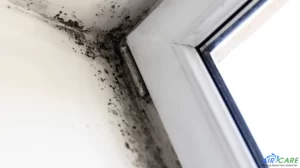How Often Should You Clean Your Dryer Vent? Expert Recommendations

Dryers are one of the most convenient appliances in our homes, saving us time and effort in doing laundry. However, many homeowners underestimate the importance of regular maintenance for this indispensable machine. Cleaning the lint trap after every use is a common practice, but it’s also crucial to pay attention to the dryer vent. A clogged dryer vent can pose serious risks to your home and safety. So, how often should you clean your dryer vent? Let’s explore the expert recommendations to ensure your dryer operates efficiently and safely.
Understanding the Importance of a Clean Dryer Vent

Before delving into the frequency of cleaning, it’s essential to understand why a clean dryer vent matters. When you use your dryer, lint, debris, and even small clothing fibers can accumulate in the vent, restricting airflow. This build-up creates several potential issues:
Fire Hazard: A clogged dryer vent significantly increases the risk of a lint fire. Lint is highly flammable, and if it accumulates in the vent and gets exposed to the dryer’s heat source, it can ignite.
Reduced Efficiency: A blocked dryer vent hampers the airflow, leading to longer drying times and increased energy consumption. Your dryer will have to work harder to dry clothes, resulting in higher utility bills.
Overheating: Restricted airflow causes the dryer to overheat, potentially damaging sensitive components and shortening the appliance’s lifespan.
Expert Recommendations for Dryer Vent Cleaning Frequency
The frequency of dryer vent cleaning depends on various factors, including usage, the type of dryer, and the length of the venting system. Here are some expert recommendations:
Regular Visual Inspection: It’s a good practice to visually inspect your dryer vent at least once every six months. Check for any visible lint or debris build-up on the exterior vent cover and the surrounding area.
Clean the Lint Trap After Every Load: Cleaning the lint trap after each load is a simple yet effective way to reduce lint build-up in the vent system. This step alone can significantly improve the efficiency and safety of your dryer.
Annual Cleaning: In general, it’s recommended to have your dryer vent professionally cleaned at least once a year. This is especially crucial for households that use the dryer frequently or have larger families, as these factors contribute to faster lint accumulation.
Monitor Drying Times: If you notice that your dryer is taking longer than usual to dry clothes, it might be a sign of a clogged vent. In such cases, consider having the vent cleaned even if it hasn’t been a year since the last cleaning.
High-Efficiency Dryers: If you own a high-efficiency dryer, it may produce more lint, and the vent might require more frequent cleaning. Check the manufacturer’s guidelines for specific recommendations.
Consider Your Home’s Situation: Homes with long venting systems or those with vents that have several bends and turns may accumulate lint more rapidly. In such cases, more frequent cleaning might be necessary.
DIY vs. Professional Cleaning
While some homeowners might attempt to clean the dryer vent themselves, it’s generally recommended to hire a professional vent cleaning service. Professional cleaners have the expertise, tools, and knowledge to thoroughly clean the vent system and ensure its safe and efficient operation.
In conclusion, regular dryer vent cleaning is crucial for maintaining the efficiency and safety of your dryer. An annual professional cleaning, combined with routine visual inspections and regular lint trap cleaning, should be sufficient for most households. However, if you notice any warning signs or have a high-efficiency dryer, more frequent cleaning may be necessary. By prioritizing dryer vent maintenance, you can enjoy the convenience of your appliance while minimizing potential hazards and ensuring its longevity.
Get in touch
- (610) 890-6300
- info@aircareonline.com
- https://aircareonline.com
- 1510 Gary Street, Unit 1 Bethlehem, PA 18018
- Monday - Friday: 8:30 am - 4:30 pm Evenings and Saturdays: By appointment only









